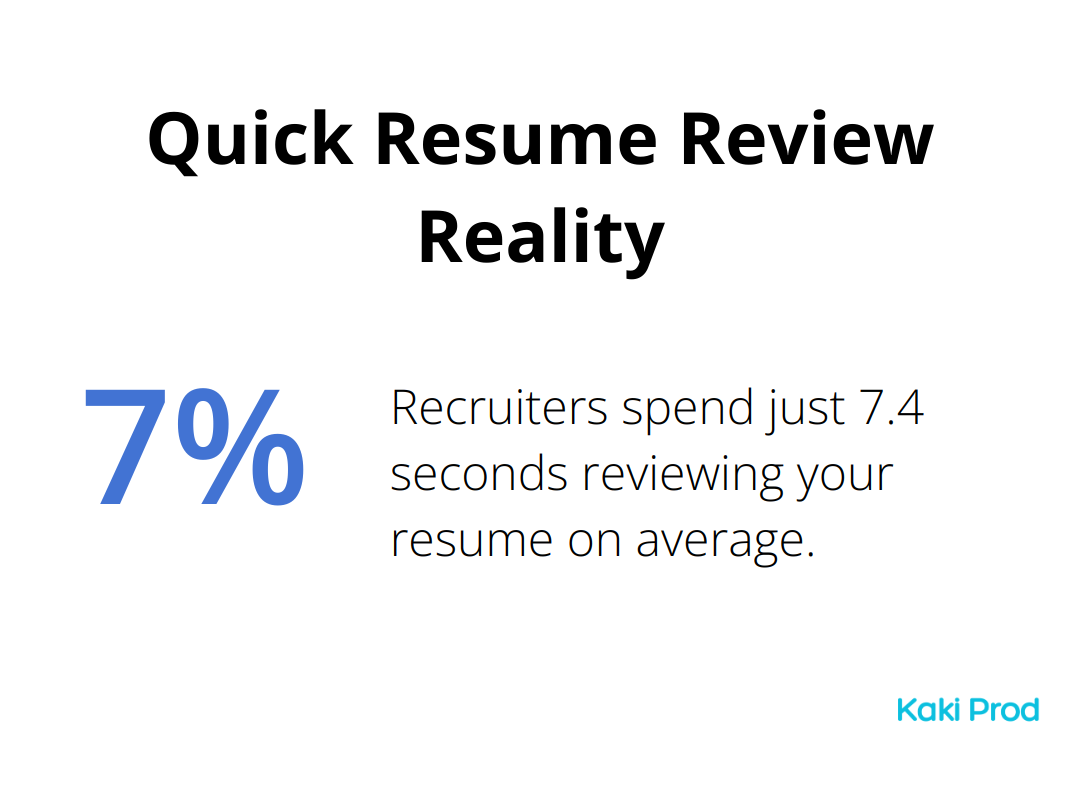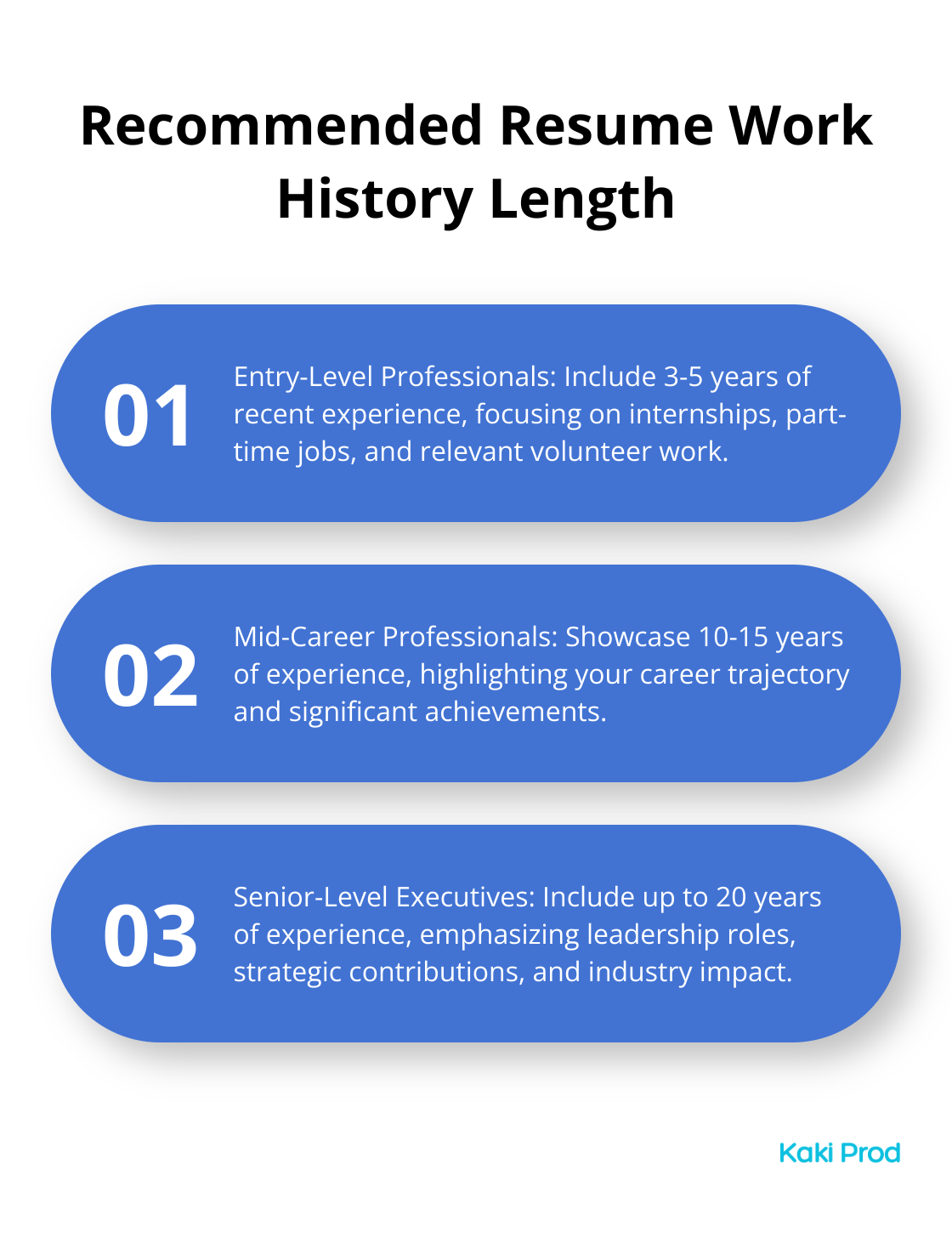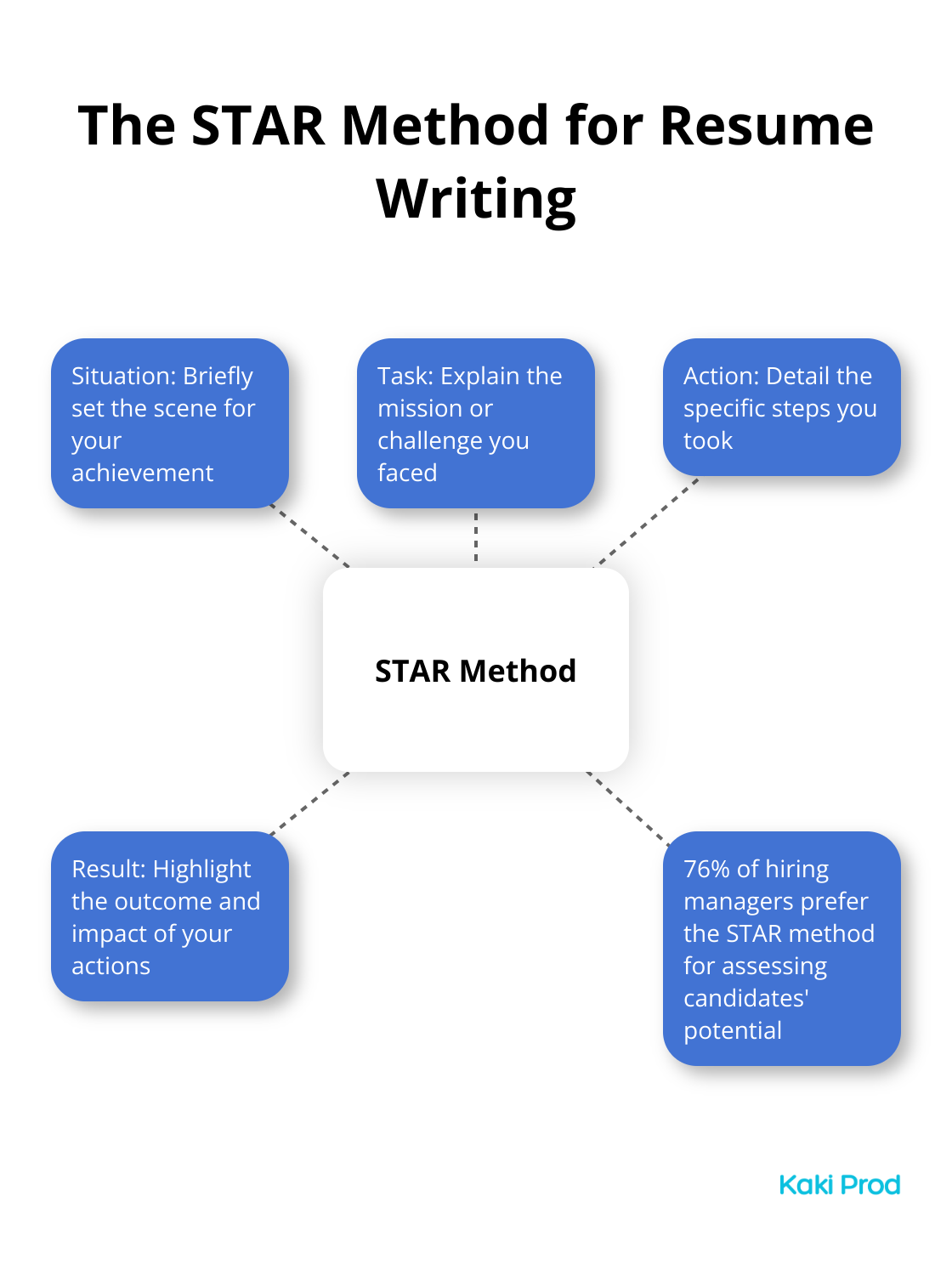At Kaki Prod, we totally get it—crafting the perfect resume feels like solving a Rubik’s cube while blindfolded. The million-dollar question on everyone’s mind: “Just how far back should I time travel on this thing?”
Spoiler: There’s no cookie-cutter formula, but fear not, we’re your resume whisperers ready to guide you through it. In this post, we’re diving into the nitty-gritty of deciding your resume’s work history timeline (because yes, there’s thinking involved) and dishing out some savvy tips to parade your experience like a boss.
What Factors Affect Resume Length?
Industry Norms Shape Expectations
So, let’s talk about industries and their quirks – ’cause every field has its little secrets. In tech, it’s all about getting to the point: recent projects, your skills, boom. They want it short and sweet. Over in academia or the government? Well, settle in, they’re into the whole life story thing. To play the game right, peek at job listings in your world and chat up a few insiders.
Career Stage Influences Timeline
Where you stand in your career ladder kinda tweaks how much you spill. Just starting out? Aim for showing off 5-10 years (whatever you can muster). If you’re sitting in the big office – senior exec style – don’t be shy to flaunt 15-20 years. Mid-career folks, you’re in the comfy middle with 10-15 years. Keep in mind, these aren’t set in stone; they’re more like guidelines to help frame your fabulous career tale.
Relevance Reigns Supreme
Let’s get real – relevance is king. Recruiters are giving your resume a once-over for a lightning-fast 7.4 seconds (seriously). Hit ’em where it counts by showing off gigs that scream your skills and wins that are bang-on for the job you’re chasing. Changing lanes from marketing to data wizardry? Shine a spotlight on those analytical gems in your marketing gigs. Perfect for you, career switchers, and those with a colorful work story.

Tailoring for Impact
Your resume, folks, is your pitch – not some exhaustive biography. Zero in on the stuff that paints you as the dream candidate for that new gig with palm trees or cobblestone streets in the background. Aiming the spotlight like this? That’s how you clinch the job of your fantasies.
Balancing Detail and Conciseness
Ah, the art of balance. Showcase your awesomeness but don’t go on forever. Zety’s got data: 83% of hiring folks are all about that one pager for budding stars, while seasoned vets can get away with a 2-page spread. Next, we’ll dive into specific timelines for different career chapters and nail how to lay down that work saga of yours effectively. Let’s roll.
How Long Should Your Resume Work History Be?
Entry-Level Professionals: Concise and Relevant
Alright, you’re fresh outta college – or maybe you’ve got less than five years under your belt. You want your resume to scream: “I’m ready!” Stick to your most recent gigs – internships, part-time jobs, and volunteer stuff that shows off skills tailored to the job you want. We’re talking 3-5 years max here. Remember, it’s about showing quality (not just any old job).
Mid-Career Professionals: The Optimal Range
Okay, so you’ve got 5-15 years of experience – you’re hitting your stride. Time to showcase your last 10-15 years. It’s about telling a story – your career narrative. Highlight your journey, your wins, but don’t drown the recruiter in ancient history. They want to see a clear trajectory.
Senior-Level Executives: Strategic Showcase
For the big leagues – those with 15+ years, or C-suite-level experience – flexibility is your ally. Include up to 20 years, but be choosy. Zoom in on roles that scream leadership, strategy, and industry sway. An “Earlier Career Highlights” section is your friend here – a neat trick to touch on those early home runs without time-stamping yourself.

Prioritize Relevance Over Comprehensiveness
No matter the level, relevance is your north star. If a job from back in the day doesn’t serve your current career trajectory, ditch it. Think of your resume as your personal billboard – not your memoir. Keep it sharp, targeted, and firmly aligned with the gig you’re gunning for – not the one from 10 years back.
Tailoring for Different Industries
Different industries have their quirks when it comes to resumes. Tech firms might want something snappy and skill-centric, while academia or government gigs could want the whole shebang. Do your homework – figure out the norms for your dream industry, and finesse your resume accordingly.
Now that you’ve cracked the code on ideal resume length for every career stage, it’s time to dive into presenting your work history like a pro and make a lasting impact on those potential employers.
How to Make Your Work History Shine
Tailor Your Experience to the Job
Here’s the deal – your resume’s gotta morph like a chameleon for each gig you’re eyeing. Dive into those job descriptions and mimic, adapt, echo their lingo. They want leadership? Boom! Highlight your squad-commanding prowess. Tech role? Spotlight those projects where you coded your brains out.
Tailor your resume to any job description, and you’re upping your game in the interview lottery. This 9-step guide… stuffed with examples – will arm you to customize like a pro.
Quantify Your Achievements
Numbers – the Rosetta Stone of resumes. Swap “increased sales” with something punchier like “boosted sales by 35% in Q3 2024.” Specify impact, folks. Managed how many troops? Oversaw what budget? Saved the company how much time or dough?
Providing numbers lends your resume a backbone of credibility. Those precise digits suggest you ain’t just whistling Dixie – you’ve got receipts.
Use Power Verbs
Lead each bullet with a verb that packs a punch. “Achieved,” “Adapted,” “Analyzed,” “Assisted,” “Built,” “Collaborated,” “Communicated,” “Completed” – these verbs scream you’re a go-getter. Steer clear of wimpy phrases like “Responsible for” or “Assisted with.”
Action verbs – they make your resume pop, showcasing those killer skills of yours.
Apply the STAR Method
For the juicy stuff – whip out the STAR method: Situation, Task, Action, Result. Set the scene briefly, explain your mission, detail the heroics, and spotlight the result. It’s like spinning a yarn about how capable you are.
A LinkedIn survey told us that 76% of hiring managers dig the STAR method for sniffing out a candidate’s potential.

Prioritize Recent and Relevant Experiences
Laser-focus on what’s hot and happening – your latest and greatest gigs. Been hustling for 15 years? That high school job flipping burgers – ditch it (unless you’re gunning for a chef gig).
Your resume – it’s your marketing magnum opus, not some exhaustive autobiography. Think quality, not quantity. Every word should pull its weight. Make each experience dazzle. For standout applications, lean on proven formats and killer techniques.
Final Thoughts
Crafting a resume that spotlights your best self needs some strategic thinking. So, how far back should your resume go? Well, that’s the million-dollar question-which depends on a bunch of stuff like where you are in your career, what industry you’re in, and whether those past gigs have anything to do with what you’re eyeballing now. If you’re just starting out, stick with the freshest stuff. But if you’re a seasoned executive? Sure, throw in the greatest hits from the last couple of decades. Giving your resume a facelift for each job app? Yeah, that’s the secret sauce to boost your chances of getting a foot in the door.
Think of your resume as your personal billboard… on the career highway. Make every word work for you. Zoom in on achievements that sync up with the job you want and, seriously, ax the ancient history. Use action verbs that pack a punch and back them up with numbers. (Trust me, numbers get hiring managers to sit up and take notice.)
Over at Kaki Prod, we’re handing you the tools to tackle those career hurdles and craft resumes that scream “hire me!” Our platform’s like your GPS to personal and professional growth. Your resume? It’s where your success story kicks off-make it epic.

